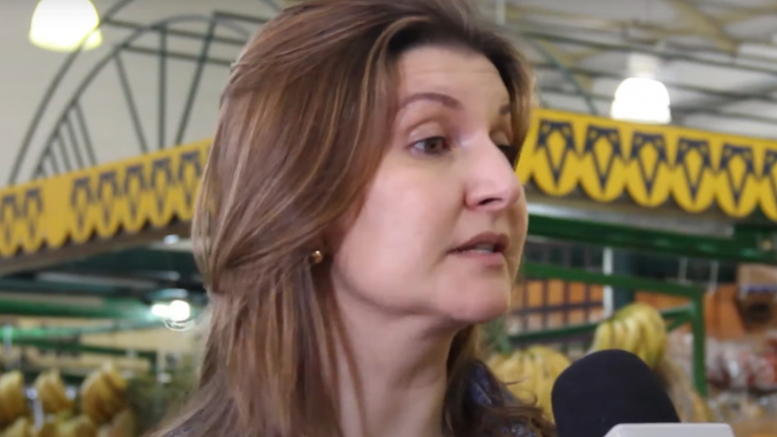“The low availability of active ingredients for minor crops comes from the lack of interest of the pesticide industry in registering products for these crops…”
Elisangeles Souza is a technical advisor for FAEP/SENAR-PR (National Service of Rural Learning), technical coordinator of the Brazilian Minor Crops Committee, with a degree in agronomy from the Federal University of the State of Paraná, and a specialist in production engineering with an emphasis on rural and agro-industrial management from the Federal University of the State of Santa Catarina.
Internationally, agricultural crops with low phytosanitary support, for which there is a lack or a reduced number of registered pesticides, are known as “Minor Crops” or “Minor Uses”. In Brazil, for legal purposes, these crops have been defined as CSFI – “Culturas com Suporte Fitossanitário Insuficiente” [Crops with Insufficient Phytosanitary Support].
The sectors involved in the production of fruits and vegetables, and even some grains, are acutely aware of the problem caused by the lack of pesticides. This lack often leads to irregular use and makes it difficult for agronomists to do their jobs, as they are unable to legally prescribe an unregistered pesticide.
The low availability of active ingredients for minor crops is due to a lack of interest on the part of the pesticide industry in registering products for these crops, due to the reduced planting area when compared to soybean, corn, and other major crops, in addition to the issue of high associated costs. For each crop to be included in the pesticide recommendations, studies must be performed to define the Maximum Residue Level (MRL), together with other procedures that require significant financial resources. In view of these difficulties and with the aim of promoting the safe and regulated use of pesticides, in 2014 the Joint Normative Instruction (INC) No. 1 was published with the co-participation of the Ministry of Agriculture of Brazil, Brazilian Health Regulatory Agency (Anvisa) and the Brazilian Institute of Environment and Renewable Natural Resources (Ibama).
The purpose of the regulation is to encourage the pesticide registration for small-scale crops by simplifying the stages of the registration process. The presentation of a technical report now meets the requirements for agronomic efficiency studies, and the organization of crops is now done into groups and subgroups for Maximum Residue Level (MRL) studies to be carried out for the crop representing the subgroup and extrapolated to other minor crops in that subgroup. This procedure contributes to a greater agility in the registration process, legalizing products for crop management and contributing to the safety of farmers, as well as food and the environment.
The inclusion of crops as minor crops may be requested by research or rural extension institutions, associations and cooperatives of farmers, and industries. This request must be formalized to the Ministry of Agriculture, which will forward it for evaluation by the other agencies involved, within the scope of their competences. The request for registration of the pesticide product may only be submitted by the industry.
It is important to highlight that the demand for pesticides registered for crops with low phytosanitary support is not exclusive to Brazilian agriculture, since countries such as the USA, Canada, Australia and Japan have been discussing alternatives for registering active ingredients for these crops for years, with standards similar to those applied in Brazil.
In 2018, with the aim of discussing strategies for identifying phytosanitary demands and contributing to the development of agriculture with quality and safety for consumers, the Brazilian Minor Crops Committee was created, a Task Force with national scope led by the productive sector, which integrates institutions representing research, industry (agrochemicals and biological products), government, pesticide dealers, etc.
The participation of interested players and the publication of INC No. 1/2014 brought the possibility of progress, but it also brought challenges due to the large volume of demands and the diversity of crops in need of pesticides. To face these challenges, the Minor Crops Committees were created, composed of farmers, technicians and researchers. These committees aim to analyze the current situation of phytosanitary support, identify the obstacles that still hinder the management and control of pests in the minor crops of interest, and indicate possible active ingredients and biological agents to solve the bottlenecks identified.
Another important challenge is the consolidation of integration between farmers, technicians, government, researchers, resellers, retailers and industry. This integration aims to identify demands according to the reality of the field, speed up registration, and provide more options for tools for managing minor crops. This will contribute to the production of safe food, allowing agricultural engineers to recommend pesticides to farmers with the guarantee that these products have been analyzed and approved by the Ministry of Agriculture, Anvisa and Ibama.
One aspect worth highlighting is that the standard has brought the benefit of greater involvement of production chains in the search for solutions to the problem. In the 10 years since its publication, approximately 464 products formulated by extrapolation of MRL have been registered, following the procedures of INC No. 1/2014, benefiting more than 100 crops.
READ MORE:

